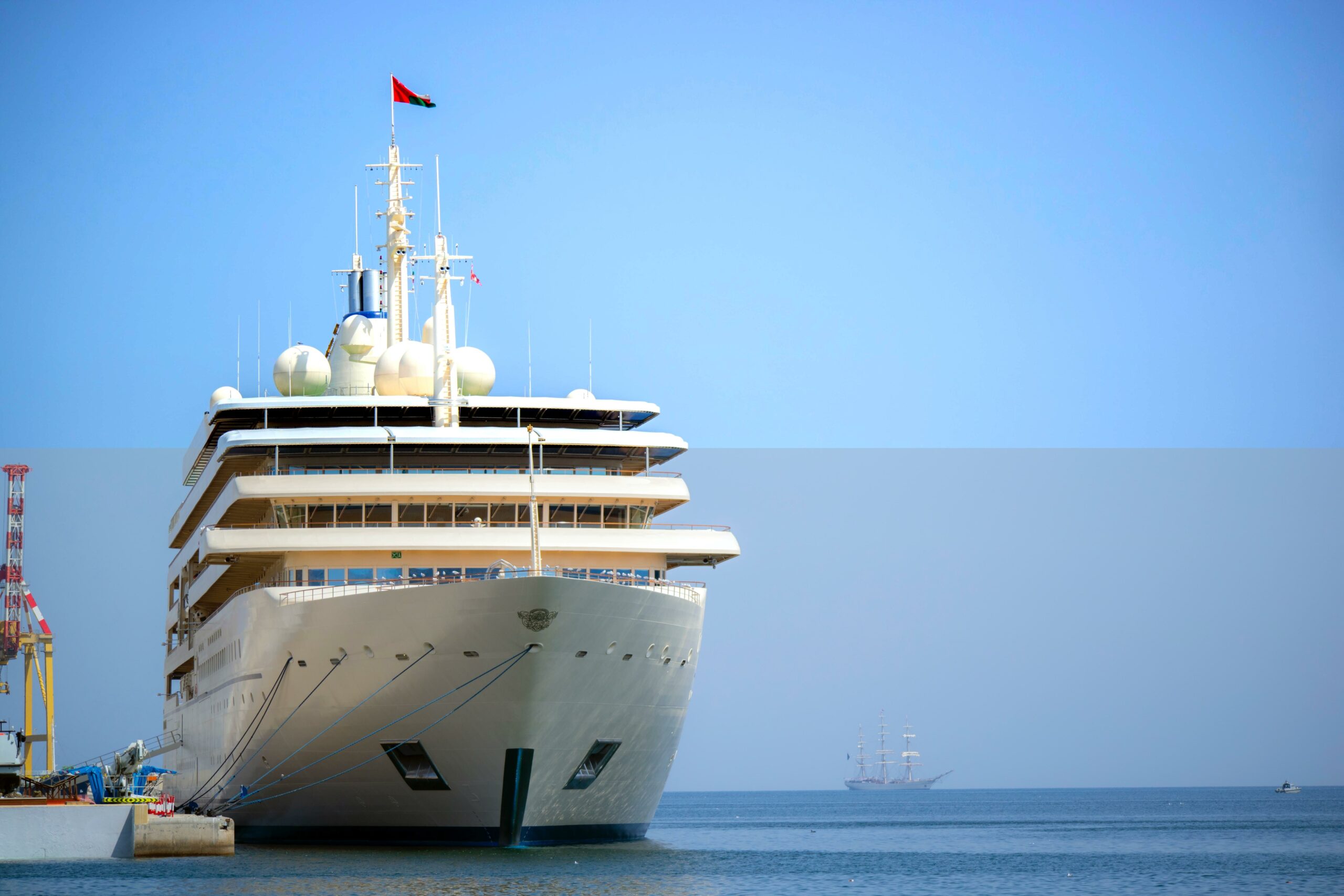Embark on a remarkable journey back in time as we unlock the secrets of one of the most fascinating aspects of ancient civilization: the Roman transportation system. While today we marvel at the speed and convenience of modern transportation, it is the ancient Romans who laid the groundwork for our modern networks. Join me as we delve into the depths of history, excavating archaeological sites and deciphering ancient texts to reveal the marvels of the Roman transportation system. Prepare to be captivated as we unravel the mysteries behind this ancient network of roads, aqueducts, and ports, and discover how the Romans paved the way for centuries of transportation innovation.
Roman Transportation
Roman transportation was a marvel of engineering and innovation, serving as a lifeline for the vast Roman Empire. From the well-maintained roads that stretched across the empire to the intricate network of aqueducts, the Romans understood the importance of efficient transportation. In this article, we will embark on a journey into the ancient networks of Roman transportation, unlocking the secrets and marvels that made it all possible.
Roads: Connecting the Empire
One of the most impressive features of the Roman transportation system was its vast network of roads. These roads were meticulously constructed and well-maintained, allowing for rapid and efficient travel throughout the empire. With the keyword [roman transportation], we delve into the importance of these roads and their impact on the Roman Empire.
The Romans constructed their roads using a layered approach, with a solid foundation of stones covered in layers of gravel and smaller stones. This careful construction ensured durability and longevity, allowing the roads to stand the test of time. These roads enabled the movement of soldiers, trade caravans, and messengers, connecting far-flung provinces and strengthening the unity of the empire.
“The roads of ancient Rome were not merely routes; they were arteries that breathed life into the empire.”
Aqueducts: Engineering Wonders
In addition to their remarkable road network, the Romans also developed an intricate system of aqueducts for transporting water. These engineering marvels supplied water to cities, towns, and even the grand villas of the wealthy elite. With the focused keyword [roman transportation], we uncover the importance of aqueducts in Roman society.
Constructed with meticulous precision, aqueducts carried water for miles, utilizing gravity flow and gentle slopes. They incorporated arches and tunnels to traverse valleys and hills, showcasing the Romans’ mastery of engineering. These aqueducts ensured a continuous water supply for public baths, fountains, and private households, underscoring the Romans’ commitment to improving the quality of life for their citizens.
“The aqueducts of ancient Rome were like a lifeline, delivering the elixir of life to the bustling cities and towns of the empire.”
Maritime Trade: Connecting the Mediterranean
While the Roman road network was impressive, maritime trade played a vital role in connecting the vast reaches of the empire. The Mediterranean Sea served as a bustling hub for trade, with ships carrying goods, ideas, and culture across the region. Including the targeted keyword [roman transportation], we explore the significance of maritime trade in Roman civilization.
The Romans built an extensive fleet of merchant ships, known as “corbitae” or “inland traders,” to facilitate trade along the Mediterranean coast. These ships transported goods such as grain, olive oil, wine, and even exotic spices from far-flung corners of the empire. The maritime routes not only stimulated economic growth but also facilitated cultural exchange and the spread of Roman influence throughout the region.
“The maritime trade routes of ancient Rome were like arteries, pulsating with the lifeblood of commerce and connecting distant lands.”
Conclusion
In conclusion, Roman transportation was a magnificent testament to the ingenuity and organization of one of history’s greatest empires. Through their well-constructed roads, intricate aqueducts, and bustling maritime trade routes, the Romans built a transportation network that united their vast empire and ensured the smooth flow of goods, people, and ideas. By unlocking the marvels of Roman transportation, we gain a deeper understanding of the empire’s achievements and its enduring legacy.
Key Takeaway: The roads, aqueducts, and maritime trade routes of ancient Rome were not merely means of transportation but symbols of the empire’s power and organization. They connected the far reaches of the empire, facilitated trade, and improved the quality of life for its citizens. The Romans’ expertise and innovation in transportation systems were truly unrivaled in their time. Travel back in time with me as we explore the wonders of Roman transportation.
Roman transportation was a remarkable feat of ingenuity and innovation. From the construction of extensive road systems to the development of advanced modes of transportation, the Romans were true pioneers in this field. If you are fascinated by Roman transportation achievements, then you must check out this comprehensive article on Roman transportation. It covers everything from the incredible Roman transportation system to fascinating facts and a detailed timeline. Discover how the Romans revolutionized ancient transportation and explore the various vehicles they used, including chariots and ships. Dive into the fascinating world of Roman transportation by clicking here: Roman transportation achievements.
But that’s not all – did you know that there are numerous captivating Roman transportation facts waiting to be uncovered? Learn about the impressive engineering feats behind their road networks, or how the Romans utilized a sophisticated system of horse-drawn carriages for transportation. Delve into a wealth of intriguing Roman transportation facts by clicking here: Roman Transportation Facts.
To understand the chronology of Roman transportation and witness its evolution over time, explore our comprehensive Roman Transportation Timeline. Discover when the first roads were constructed, how naval transportation developed, and how the Roman transportation system expanded with the empire. Travel through time and uncover the fascinating milestones of Roman transportation by clicking here: Roman Transportation Timeline.
The Roman transportation system was a marvel in itself, connecting vast territories and enabling efficient trade and communication. If you’re interested in learning more about this incredible system, click here: Roman Transportation System. Explore how the Romans constructed impressive road networks, developed a well-organized system of transport, and managed to transport goods and people across their vast empire.
Lastly, no exploration of Roman transportation would be complete without examining the vehicles that formed the backbone of ancient Roman travel. From chariots to ships, and even early versions of bicycles, these vehicles played a crucial role in Roman society. Dive into the world of ancient Roman transportation vehicles by clicking here: Ancient Roman Transportation Vehicles. Discover the engineering marvels and cultural significance behind these ancient modes of conveyance.
So, whether you’re curious about their incredible achievements, interested in fascinating facts, want to explore the timeline, delve into their transportation system, or uncover the vehicles that shaped Roman civilization, this article on Roman transportation has got you covered. Click on the respective links and embark on a captivating journey through ancient Rome’s transport innovations.
Ancient Roman Transportation
The ancient Romans were masters of transportation, with their engineering prowess and innovative systems. Their transportation networks were a key factor in the success and organization of the Roman Empire. From the well-maintained road network to the ingenious aqueducts and maritime trade routes, the Romans left a lasting legacy in the realm of transportation. In this article, we will delve into the marvels of ancient Roman transportation and unlock the secrets of their ancient networks.
Roman Roads: Building a Foundation for Connectivity
The Roman road network was an incredible feat of engineering, enabling efficient travel and communication throughout the vast empire. These roads were not only functional but constructed with precision and durability in mind. Using a layered approach, the Romans built their roads to withstand the test of time. Layers of sand, gravel, and small stones were compacted to create a solid foundation, topped with large stone slabs for stability. The result was roads that could withstand heavy traffic and harsh weather conditions.
“The Roman road network formed the foundation for connectivity within the empire, allowing for the efficient movement of goods, people, and ideas.”
Aqueducts: Masterpieces of Engineering
Water supply was crucial for the thriving Roman cities and towns. To meet this need, the Romans developed aqueducts, which were impressive structures designed to transport water over long distances. These aqueducts showcased the Romans’ mastery of engineering and precision. With a gentle downward slope, these structures facilitated the flow of water from higher elevations to urban centers, supplying water to public baths, fountains, and even wealthy elites’ villas.
“The aqueducts were marvels of engineering, bringing a reliable water supply to the Roman citizens and enhancing their quality of life.”
Maritime Trade: Connecting the Empire
The Mediterranean Sea played a vital role in connecting the vast Roman Empire. Maritime trade routes facilitated the movement of goods, stimulating economic growth and cultural exchange. Roman merchant ships traversed the seas, transporting various commodities such as grain, olive oil, and luxurious goods like silk and spices. These ships were meticulously designed and constructed, ensuring safe and efficient transportation of goods across the empire.
“Maritime trade was the lifeline of the Roman Empire, connecting distant regions and fostering economic prosperity and cultural diversity.”
Roman Transportation: A Symbol of Power and Organization
The transportation systems of ancient Rome were not only functional but also symbolic of the empire’s power and organization. The well-maintained roads, grand aqueducts, and bustling trade routes showcased the Romans’ expertise and innovation. These systems united the empire, ensuring the flow of goods, people, and ideas, strengthening the cohesion and influence of the Roman Empire.
“Roman transportation networks were a testament to the empire’s power and organization, showcasing their unparalleled expertise in engineering and logistics.”
In conclusion, the ancient Roman transportation network was a marvel of engineering and innovation. Their roads, aqueducts, and maritime trade routes were not only practical but also symbols of their power and organization. The Romans left a lasting legacy in the realm of transportation, connecting their vast empire and facilitating the flow of goods, people, and ideas. To understand the marvels of ancient Roman transportation is to gain insight into the ingenuity and capabilities of this ancient civilization.
Roman Transportation System
The ancient Romans were masters of transportation, and their innovative systems played a pivotal role in the success and organization of the Roman Empire. Let’s embark on a journey into the marvels of the Roman transportation system, exploring the intricate networks that connected cities, facilitated trade, and united the empire.
Roman Road Network
One of the most remarkable aspects of the Roman transportation system was their extensive road network. These roads were not ordinary paths; they were engineering marvels constructed with precision and durability. Layered with sand, gravel, and stones, these roads provided stability and allowed for efficient travel and communication throughout the empire. Imagine walking on a road so solidly built that it feels like stepping on a foundation of progress and connectivity.
“The Roman road network was a testament to their engineering prowess, offering a solid infrastructure that connected their vast empire.”
Aqueducts: Masterpieces of Engineering
In addition to the magnificent road network, the Romans also excelled in the construction of aqueducts, complex systems designed to transport water over long distances. These incredible structures showcased the Romans’ mastery of engineering and served as lifelines for cities, towns, and even the luxurious villas of the wealthy elites. Just like the flowing water, the aqueducts enabled a fluid and improved quality of life for citizens, as they provided water for public baths, fountains, and daily needs.
“The aqueducts were more than mere conduits; they were symbols of Roman ingenuity, uniting society by ensuring the vital flow of water throughout the empire.”
Maritime Trade: Connecting the Empire
The Romans understood the importance of maritime trade in fostering economic growth and cultural exchange. They took advantage of the Mediterranean Sea, establishing extensive maritime trade routes that facilitated the transportation of goods, ideas, and people. Roman merchant ships became the bustling arteries of commerce, carrying various commodities across the empire and stimulating economic prosperity.
“Just as the waves connect the shores, maritime trade routes served as bridges, uniting the diverse regions of the Roman Empire and fueling a vibrant exchange of wealth and culture.”
Uniting the Empire through Transportation
The transportation systems of ancient Rome were much more than functional networks. They were powerful tools that symbolized the empire’s strength and organization. These systems created a sense of unity by ensuring a seamless flow of goods, people, and ideas. They allowed the Romans to assert their dominance and showcase their expertise and innovation in engineering and logistics.
“The Roman transportation system was the heartbeat of the empire, pulsating with the power of connectivity and forging an unbreakable bond among its citizens.”
In conclusion, the marvels of the Roman transportation system continue to captivate and inspire us today. From the impressive road network to the ingenious aqueducts and the bustling maritime trade routes, the Romans left an undeniable legacy in the field of transportation. They navigated the challenges of a vast empire with awe-inspiring engineering solutions, all while firmly uniting their citizens under a single umbrella of progress and connectivity.
“Unlocking the marvels of the Roman transportation system allows us to appreciate the ingenuity and determination of ancient civilizations, reminding us of the transformative power of transportation in shaping the world.”
Roman Road Construction: An Engineering Marvel
[youtube v=”z1aFWtBXHII”]
Deforestation, soil removal, and the strategic placement of kerbs were the initial steps in constructing a Roman road. The process involved carefully layering stones and aggregates to create a durable foundation. The final surface layer consisted of meticulously selected materials for optimal quality. The road’s geometry, with slightly sloping sides, allowed rainwater to drain away effectively.
Ditches discovered near the road prevented access from unauthorized vehicles and improved visibility, providing protection from unexpected encounters with wild animals or potential highway robbers.
“Roman road construction showcased their engineering expertise and attention to detail, resulting in a durable and well-protected transportation network.”
FAQ
Question 1
What were the main modes of transportation in ancient Rome?
Answer 1
The main modes of transportation in ancient Rome included roads, ships, and even a complex system of underground tunnels known as aqueducts.
Question 2
How did the ancient Romans build and maintain their roads?
Answer 2
The ancient Romans built their roads by carefully constructing a layered foundation using layers of stones and gravel. These roads were then maintained by a dedicated workforce of engineers and laborers.
Question 3
What role did ships play in the ancient Roman transportation system?
Answer 3
Ships played a vital role in the ancient Roman transportation system as they facilitated trade and enabled the movement of goods and people across the Mediterranean Sea and its various waterways.
Question 4
What were the underground tunnels known as aqueducts used for in ancient Rome?
Answer 4
The underground tunnels known as aqueducts were primarily used to transport fresh water from distant sources to the cities of ancient Rome. They were also used for irrigation and to supply water for public baths and fountains.
Question 5
Did the ancient Romans have any form of public transportation?
Answer 5
Yes, the ancient Romans had various forms of public transportation, including chariots, omnibuses known as “carriages,” and even a rudimentary form of taxis called “rheda.” These modes of transportation were accessible to the general public for a fee.












